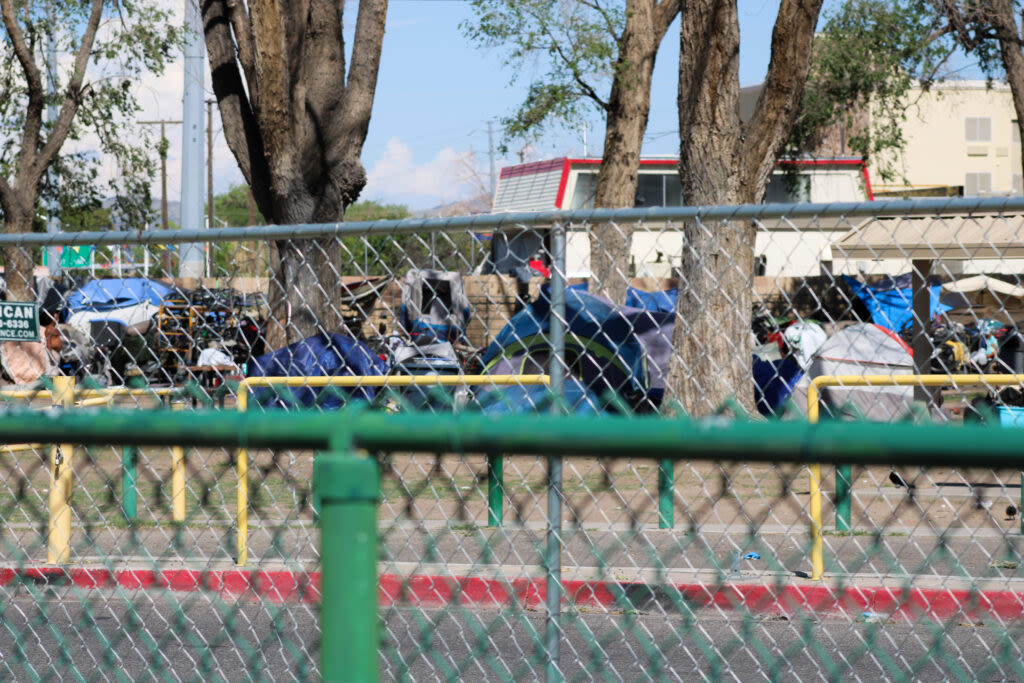Search results
Explore more in Albuquerque
Events
- MAY27MusicLord HuronRevel Entertainment Center8:00 PMMAY28SportsAlbuquerque Isotopes Vs. Oklahoma City Baseball ClubRio Grande Credit Union Field at Isotopes Park6:35 PM
- MAY30
 MusicCharles Wesley GodwinRevel Entertainment Center8:00 PMJUN1MusicBrooks & Dunn: Reboot 2024 TourIsleta Amphitheater7:00 PM
MusicCharles Wesley GodwinRevel Entertainment Center8:00 PMJUN1MusicBrooks & Dunn: Reboot 2024 TourIsleta Amphitheater7:00 PM - JUN2
 MiscellaneousArtemis Promotions: Lowrider 2024 Albuquerque Super ShowAlbuquerque Convention Center12:00 AMJUN7
MiscellaneousArtemis Promotions: Lowrider 2024 Albuquerque Super ShowAlbuquerque Convention Center12:00 AMJUN7 Arts & TheatreAn Evening of Comedy With Hari Kondabolu in ABQThe Historic Lobo Theater Lounge and Event Center8:00 PM
Arts & TheatreAn Evening of Comedy With Hari Kondabolu in ABQThe Historic Lobo Theater Lounge and Event Center8:00 PM
Albuquerque is located in north-central New Mexico. To its east are the Sandia–Manzano Mountains. The Rio Grande flows north to south through its center, while the West Mesa and Petroglyph National Monument make up the western part of the city.
Welcome to Albuquerque. At the heart of New Mexico beats the pulse of a vibrant city. In Albuquerque, diverse cultures, authentic art and dynamic traditions have helped shape our centuries-old story. No matter your interests, the city has countless opportunities for you to explore. Sample traditional New Mexican cuisine that takes minutes to ...
News about Albuquerque, New Mexico, train
News about COOK'S COUNTRY, Joyce Willis King, Albuquerque
Also in the news
- 12.6 miles to city center. Address: 30 Tramway Rd NE. 2 hours to Half Day. TIME TO SPEND. For excellent views of Albuquerque and the nearby Sandia Mountains, take a ride on the Sandia Peak Tramway.
- 0.6 miles to city center. Address: 200 N Plaza St NW. Free, Neighborhood/Area, Sightseeing. TYPE. 2 hours to Half Day. TIME TO SPEND.
- 1.5 miles to city center. Address: 2401 12th St NW. Museums. TYPE. 1 to 2 hours. TIME TO SPEND.
- 1 mile to city center. Address: 903 10th St. SW. Zoos and Aquariums, Parks and Gardens, Sightseeing. TYPE. 2 hours to Half Day. TIME TO SPEND.
3. Indian Pueblo Cultural Center. 2,137. Speciality Museums. IPCC was founded in 1976 and is jointly owned and operated by the 19 Pueblos of New Mexico. Located in the historic Albuquerque Indian School District just minutes from Downtown and Old Town Albuquerque, the Indian Pueblo Cultural Center is a world-class museum and cultural center ...
- Overview
- Character of the city
- City site
- Climate
- City layout
Albuquerque, city, seat (1883) of Bernalillo county, west-central New Mexico, U.S., located on the Rio Grande opposite a pass between the Sandia and Manzano mountains to the east. The area was the site of Native American pueblos (villages) when Europeans first arrived in 1540. Founded in 1706 by Don Francisco Cuervo y Valdés, governor and captain general of New Mexico, it was named for the duke of Alburquerque, then viceroy of New Spain (the first r was later dropped). It became an important trading centre on the Chihuahua Trail from Mexico.
As a modern-day cultural and political centre, Albuquerque has long played a secondary role to the state capital, Santa Fe, which lies some 60 miles (100 km) to the northeast. Albuquerque is New Mexico’s largest city and its economic capital, however, and it is served by an extensive network of railroads, airlines, and highways. At the heart of the city’s economy are the military and high-technology sectors. Area 181 square miles (469 square km). Pop. (2010) 545,852; Albuquerque Metro Area, 887,077; (2020) 564,559; Albuquerque Metro Area, 916,528.
Enclosed by mountains, the Rio Grande, lava cliffs, military bases, and Native American pueblos, Albuquerque seemingly has reached its physical limits, barring expansion into adjacent valleys. Much of the city is made up of suburban developments. Older neighbourhoods line the banks of the broad Rio Grande, with Spanish-style adobe homes nestled amo...
Albuquerque lies in the Chihuahuan Desert, in a broad valley that stretches about 30 miles (48 km) east-west. The valley is bounded for most of its length by the Sandia Mountains to the north, the slightly lower Manzano Mountains to the east, and the low but rugged lava escarpments to the south and west. The Rio Grande bisects the western end of the valley, and a highway follows the river’s course through the city southward to the Texas border. To the west of the Rio Grande is a lava field and a cluster of dormant volcanoes. At the eastern end of the valley lies Tijeras Canyon, a rugged, boulder-strewn gorge that opens onto a broad plateau; a multilane highway passes through the canyon. The entire region is part of the tectonic Rio Grande rift valley, and minor earthquakes are common.
Most of the city proper lies on hilly terraces composed of gravels from the Miocene (about 23 million to 5.3 million years ago) and Pliocene (about 5.3 million to 2.6 million years ago) epochs. These terraces were formed over millennia by soils and rocks washing down from the nearby Sandia and Manzano mountains and deposited by periodic floods. Rich in nutrients, these soils have provided the basis for the region’s long tradition of floodplain agriculture.
Albuquerque’s climate is mild and dry, with an annual average of more than 200 clear days. The average annual temperature is in the mid-50s F (about 13 °C). The Manzano Mountains to the east block much of the moisture-laden air that flows northward from the Gulf of Mexico, creating a rain shadow. As a result, the city receives only about 9 inches (230 mm) of rainfall annually, most of it falling in the summer. The Sandia Mountains receive about 30 inches (760 mm) of rain in the summer and about the same amount of snow in the winter.
Students save 67%! Learn more about our special academic rate today.
Suburbs and satellite communities have grown rapidly while the heart of the original city—the 18th-century Old Town and the 19th-century Downtown—long languished, despite the government’s attempt to attract attention to these historic districts with new civic plazas, museums, and parks. In the early 21st century, however, Downtown again became attractive, especially to faculty from the University of New Mexico and students and artists. Like many cities in the western United States, Albuquerque has several widespread centres in place of a single downtown core.
The Uptown district, to the north of Old Town, boasts shopping centres, hotels, and office and industrial parks. The Downtown area south of Old Town comprises government buildings, hospitals, and museums. To the east of Old Town is the home of the University of New Mexico as well as a number of attractive, tree-lined neighbourhoods. Extending from Uptown to the foothills of the Sandia Mountains is Far Heights, mainly a sprawl of suburban homes, retail giants, and restaurants. Beyond the city proper to the north and south, respectively, lie the North Valley and the South Valley, which comprise several old farming settlements; both areas are largely Hispanic and industrial or agricultural in character. To the far northwest of Old Town lies Rio Rancho, an independent entity that was a retirement centre but is now a small upscale city.
Feb 20, 2023 · 19. Drink Pinon Coffee. Locally roasted in Albuquerque, Pinon coffee is a New Mexico classic. It’s a bit of an acquired tasted, because it’s flavoured with the Pinon Nut, an edible pine nut which has been a part of the staple diet in this part of the world for a very long time. Pinon Coffee.
Albuquerque is known for its New Mexican cuisine, and locals argue fiercely over which restaurants have the best chile. Favorites such as El Modelo, Sadies, and Duran’s serve classic New Mexico dishes such as chiles rellenos, stuffed sopapillas, carne adovada and enchiladas, and are beloved for a reason.











































